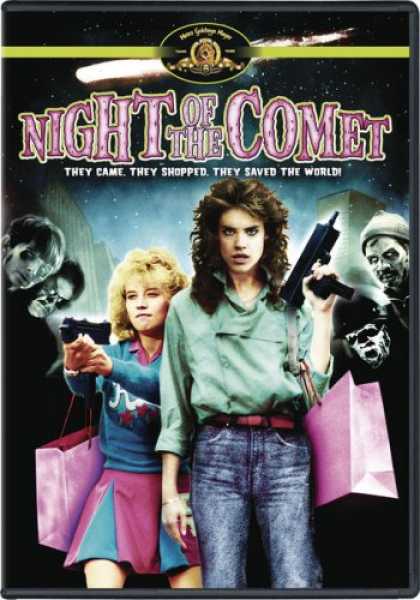
Posted on 02/23/2009 9:06:48 AM PST by lakeprincess
Its green, gassy, has two fins. A vintage Cadillac? No, it's Comet Lulin coming Monday tonight - astronomers, astrologers and George Noory all watching
(Excerpt) Read more at washingtontimes.com ...
The comet will be visible to the naked eye in clear night skies, about 45 degrees above the horizon in the southeastern skies, below Saturn. After 11 p.m. is ideal viewing time.
Wow...20 posts and no Uranis jokes, I am disappointed.

go to your room lmao
Most on that post didn't bother to read the whole thing, but certainly bashed the poster as a nut.
You could see it for the past few days with binoculars. Pretty dim thought. Not sure you can see it in a big city.

I’m thinking more “Andromeda Strain” (the Arthur Hill version, not the recent putrid remake).
when you look at Venus, you are seeing the westernmost line of what we call the ecliptic. Follow that, in an arc, to the east, there you will find Orion. He is a large vertical rectangle with a series of bright stars as his belt and sword.
If you continue to follow to the east, at 10:00 +/- you will find Leo and then Virgo. Lulin will be at the border between these two constellations on the 23rd.

Or when; It may be eastern time.
Looks like a picture of a tomato sandwich.
I got mine:
I know what you mean about the star charts...I just started an astronomy hobby recently. Actually, the best place to get started is in a big city by naked eye. Here is a star chart that you can change the viewing options, to make the chart much simpler http://saturn.jpl.nasa.gov/kids/activities-nightsky-usa.cfm. (uncheck “deep sky”, uncheck “outlines” and “boundaries” for the constellations, uncheck “Bayer/Flamsteed” codes). I have the chart show me only stars with magnitudes of 3.5 or higher. Anything more than that, the chart has too many things to look it. At 3.5, it corresponds with what I can actually see from my urban area.
The first constellation you need to find is Orion. It is by far the easiest constellation in the sky to find. You will see three bright stars in a row (Orions belt) with a bright star on top (Betelgeuse) and a bright one on the bottom (Rigel). From there you need to find Procyon, which is to the “left” of Betelgeuse....keep toggling “left” and you will run into Leo and Saturn. The comet should be a tick below Saturn. Saturn is about twice the distance from Procyon as Procyon is from Betelgeuse.
ping
http://www.skymaps.com/skymaps/tesmn0902.pdf
This is a fairly simple chart to use. Look for Venus to the right of the chart and Orion roughly in the middle. With stars, time is everything. As the Earth rotates, you get a different view. Hold the chart towards a cardinal direction (East, West, etc.) and have that direction at the bottom of the chart. The sky should look similar.
The beauty is when you connect the big dots in the sky and you no longer need the chart!
It portends the “green” obsession destroying our economy.
I recommend www.spaceweather.com. Good photos and maps.
Basically, look to the east. About 9:30 or so you will see the backwards question mark of Leo, and then, lower to the horizon, Saturn. Just below Saturn, you should see the comet.
It will NOT look like what it looks like in the photos.
If you have a good telescope, you might also want to check out Saturn tonight. There is a transit by 4 of Saturn’s moons, almost at the same time as Lulin reaches closest approach.
Those without scope or clear skies might also want to check out: http://www.ccssc.org/ The Coca-Cola Space Science Center in Columbus, GA. They are doing live feed of the comet all night tonight and tomorrow morning.
A glowing green comet is how about every other Sci-Fi movie in the 1950’s started.
So, when do the pod people show up, and is resistance futile?
Disclaimer: Opinions posted on Free Republic are those of the individual posters and do not necessarily represent the opinion of Free Republic or its management. All materials posted herein are protected by copyright law and the exemption for fair use of copyrighted works.